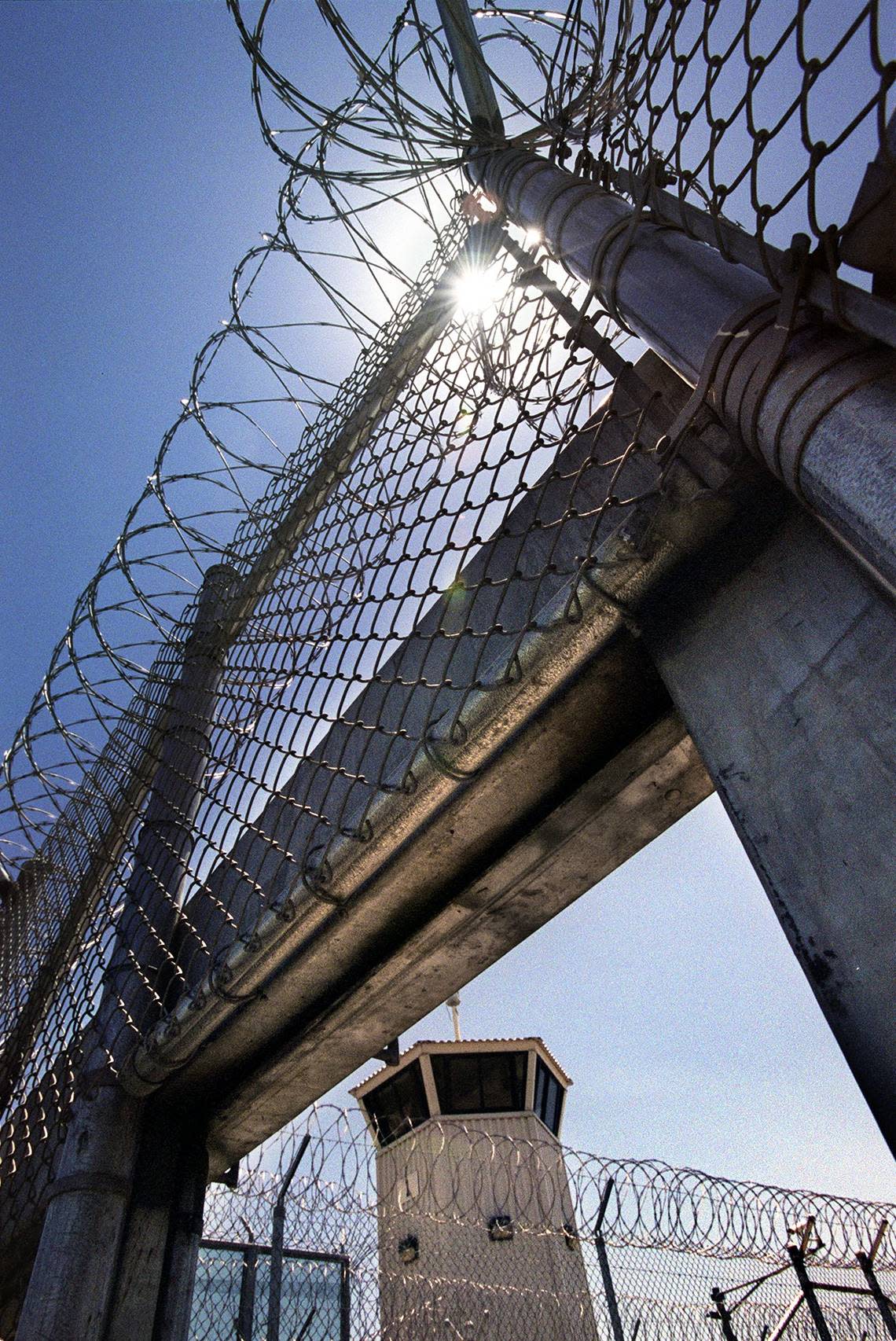A California inmate died during the heat wave. What do state prison conditions look like?

A woman incarcerated at the Central California Women’s Facility in Chowchilla died Saturday amid the heat wave, raising concerns over extreme heat conditions in regional correctional facilities.
Adrienne Boulware’s family said that they were informed by prison staff that she had died from a heat stroke. In a statement, California Department of Corrections and Rehabilitation public information officer Mary Xjimenez said that the cause of death appears to be related to pre-existing health conditions, not the heat. The coroner’s office is still determining an official cause of death.
Boulware’s daughter Michela Nelson said her mother had complained of exhaustion and physical tolls from summertime extreme heat for years. The prison is not equipped with air conditioning or other cooling systems in residential areas needed to adequately preserve the health of its incarcerated residents, according to Nelson.
“Something could have been done to prevent it. And she was so close to coming home — it’s like a slap in the face,” Nelson said. “People in prison are not just a number.”
Nelson said her mother was set to be released from the prison in February 2025.
Allegations of an inadequate response to extreme heat are not limited to the CCWF. Travis Martin, who is incarcerated at the Pleasant Valley State Prison, said that administrators at that facility have failed to provide temperature sensors and supplementary cooling systems like fans and ice as incarcerated residents suffer from the heat. In a letter to Deputy Attorney General Sarah Brattin, he added that prison Warden Steve Smith failed to visit the facility on a weekly basis to evaluate conditions. Brattin did not respond to a request for comment.
The open spaces and cells inside the Pleasant Valley facility are surrounded by walls made of concrete, a substance that absorbs high levels of heat and radiates the thermal energy out into the surrounding environment. Martin said that in the past week, temperatures have climbed to nearly 100 degrees inside the facility.
“The whole back walls of the cells are giant radiating concrete heat blocks, and the vent is just wisping in warm air,” Martin said. “This isn’t just whining inmates complaining and whining about everything because they’re not happy about being in prison… we’re locked inside of a cell that’s greater than 90 degrees, and it’s dangerous.”
Xjimenez wrote that all housing units in California prisons provide cooling relief, often through evaporative coolers and fans. She added that facilities may also provide increased access to air conditioned areas, water stations, portable cooling units, ice, and fans during extreme heat situations.
Advocates noted that many of the cooling measures Xjimenez outlined are not necessarily implemented at all the prisons.
A 2024 study published in the journal Nature Sustainability found that from 2016 to 2020, California ranked third among states with the highest numbers of incarcerated people exposed to potentially hazardous heat days, behind Texas and Florida.
A heat advisory pop-up currently appears on the CDCR’s website, informing visitors that “extreme heat is forecasted for much of the state this week” and recommending that they “stay cool and hydrated and check in on loved ones.”
Nelson said that she and her sisters called their mother frequently, often talking about the extreme heat conditions Boulware struggled with. Her cousin Fatima Williams received several letters from Boulware where she said that the high temperatures exacerbated her pre-existing medical conditions. Women incarcerated at CCWF said they frequently brought their heat struggles up to prison officials, who they said never took action to alleviate the situation.
Trancita Ponce, who is currently incarcerated at the CCWF, called the advocacy organization California Coalition for Women Prisoners pleading for help amid the heat. She claimed that temperatures reached upwards of 97 degrees inside the facility.
“There is hot air blowing inside of our rooms, I have a huge migraine and I feel sick and other girls are throwing up. Not to mention somebody died two days ago from heat exhaustion,” Ponce told the coalition staff. “Please help us, they’re not doing anything for us.”
On June 20, the state Division of Occupational Safety and Health approved a set of indoor heat regulations meant to keep workers across the state cool amid the record high temperatures. But the board notably exempted prison and jails from the workplace regulations, citing high financial burdens related to the installation of cooling systems. Beyond the impact to employees working in the California prisons and jails, the exemption allows facilities to continue keeping incarcerated people in extreme heat conditions.
Carter White, the supervising attorney of the King Hall Civil Rights Clinic at the UC Davis law school, said that the extreme heat conditions facing incarcerated people may be interpreted as a violation of the Eighth Amendment, which prohibits cruel and unusual punishment. He cited a recent case in Texas in which a judge determined that one prison’s heat conditions were cruel and unusual, ordering it to institute temporary air conditioning.
White and Martin both noted that some incarcerated people are on medications that cause higher heat sensitivity, putting them at increased risk for developing health problems. Xjimenez stated that under CDCR’s heat contingency plans, incarcerated people at high risk of developing heat-related health problems are closely monitored and moved to cooler areas during extreme conditions.
Advocates say that unless state prisons take immediate action to drastically cool down facilities for all incarcerated residents, more people will develop serious health conditions or die from heat-related illness.
“It’s only going to get worse, depending on the area, depending on the lack of help from staff during that time period of extreme heat,” said California Coalition for Women Prisoners advocate Kelly Savage-Rodriguez, who said she struggled with extreme heat while previously incarcerated at the CCWF. “Obviously providing ice is an easy way to assist, but something as easy as providing cooling rags for every incarcerated person can save lives.”


